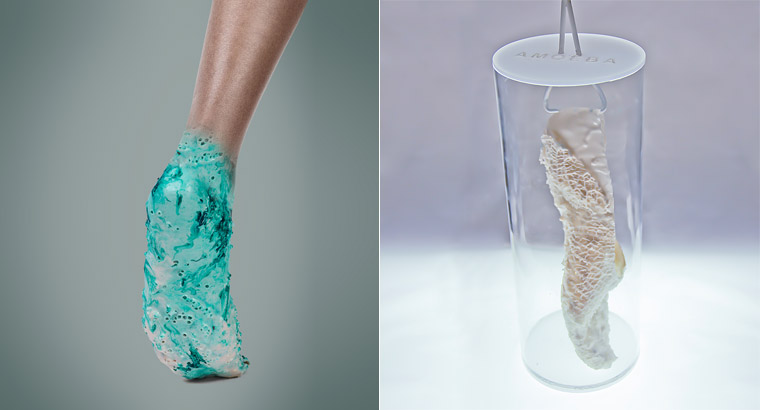In the ongoing research and creation of new materials, some designers are well beyond the limits of what we thought to be impossible, by merging organic and inorganic in new objects derived from protocells. To mimic nature is over, now lifeless comes to life.
Can you imagine a smart sneaker capable of automatically adapting to the ground? And a building repairing itself? This is the future where researchers and material designers are heading. By putting together biology, chemistry and new technologies, they conceive hybrid objects between organic and inorganic, natural and artificial. The basis of it has a name: protocells.
Emerged from the researches on the origin of life, the protocells are the simplest existing living systems. “It is just a bunch of chemicals that are able to have an interesting and complicated behavior that mimics life”, points out Martin Hanczyc, a chemist that explores this path between the living and non-living, according to whom “over the past 150 years, science has almost erased the distinction between non-living and living systems, and now we are considering the possibility of a continuum between these two. In his Artificial Biology lab at the University of Trento, Hanczyc works on mixing non-living ingredients to create artificial cells with some of the living system characteristics.
These sneakers are pretty alive
This is why several design professionals address him during his research, such as the designer Shamees Aden, who wants to convert Amoeba into reality. Amoeba is the sneaker of the future, product of her imagination, her Master final work ‘Textile Futures’ in the prestigious Londoner arts school Central Saint Martins.
Tomorrow’s runners are going to be amazed by these personalized sneakers that can adapt perfectly to the runner’s foot as a second skin. They are synchronized and react to changes in pressure, by adapting in real time to reinforce the areas of the foot that experience a greater impact or to optimize their performances depending on the surface.

For now, it is just a conceptual prototype, but Aden thinks it would be possible to manufacture these sneakers using the biotechnological 3D printing technic through protocells. The study of protocells is a rising science that has the potential to revolutionize the future of materials”, points out the researcher Shamees Aden.
The Amoeba are just an example of these new materials that are situated between organic and inorganic. Artificially produced from a combination of chemicals in a lab, their life is prolonged every time they are used, self-repairing inside a beaker with a fluid containing more protocells.
Architecture that repairs itself
In the world of design, we find other projects that take their inspiration from the use of these living organisms in an artificial way, like the Rachel Armstrong’s one, whose aim is to save Venice from disappearing under water. “So, we have devised a way by which it may be possible for the protocell technology that we are working with to sustainably reclaim Venice. And architect Christian Kerrigan has come up with a series of designs that show us how it may be possible to actually grow a limestone reef underneath the city”, pointed out in a TEDex conference this experimental architecture professor of Newcastle University.
The protocells could save Venice from being submerged.The protocells would create a shield around the wooden pillars of Venice, petrifying it and at the same time they could contribute to improve the quality of water and to create suitable areas for the development of the marine fauna. Everything depends on how they are programmed.
Similarly to the Amoeba, the buildings could also repair themselves thanks to new materials emerged during this research. Another idea on which Armstrong is working on is a paint containing programmed protocells to produce limestone when exposed to carbon dioxide. Decontaminating and self-repairing buildings would be created, generating limestone to cover possible cracks.
“Now, this is not going to happen tomorrow. It’s going to take a while. It’s going to take years of tuning and monitoring this technology in order for us to become ready to test it”, explains Rachel Armstrong. However, according to the architect and researcher, these new metabolic materials are the future of self-sustaining architecture, since “they have some of the properties of living systems, which means they can perform in similar ways”, reacting to changes in their environment.




